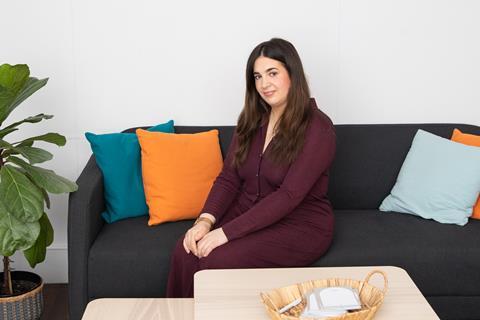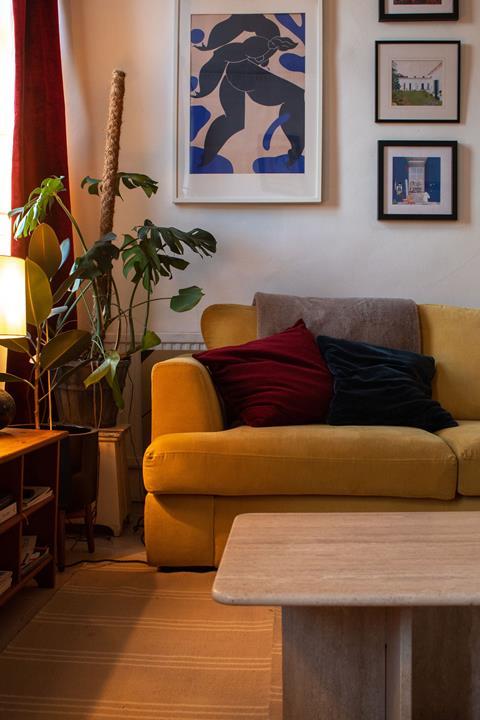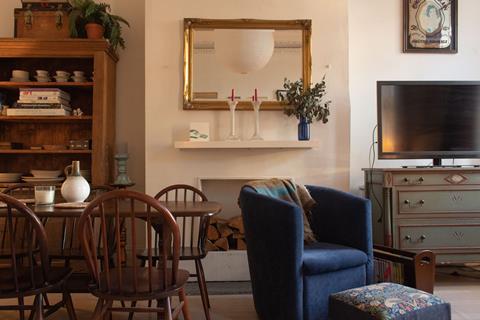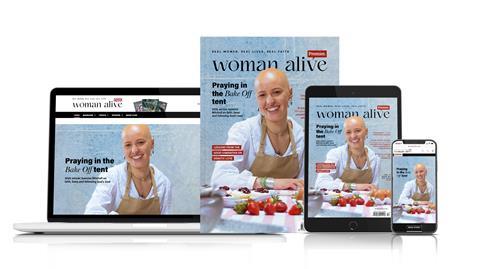Interior designer Alix Wagner spoke to our editor, Tola-Doll Fisher about creating safe homes and the reality of furniture poverty

TDF: Could you explain exactly what you do?
AW: My work is all based around Isaiah 32:18: “My people will live in peaceful dwelling-places, in secure homes, in undisturbed places of rest.” I really believe that everybody deserves to have somewhere where they feel safe, where they can rest and recuperate, so they can go and do whatever God has called them to do. I’m a freelance interior designer which means I help people create [safe] spaces in their homes or create homes that are functional.
I work in residential homes and am also passionate about working with women who have fled domestic violence, so have never had a chance to actually create a proper home. I help create a space where they can walk in and feel: “Oh, this is home; this is what home should feel like.”
TDF: How did you get into interior design?
AW: I’ve always been super creative. I did fashion design at university but didn’t enjoy working in the industry. Let’s just say that there were some very loose legislation rules, which some of the companies I worked for definitely used to their own advantage. So when my dad set up his own building consultancy I started working for him. There were some crossovers from my degree, such as creating mood boards and utilising colour theory, but I learned more on the technical side like working with architects. I started doing internships with high residential studios across London, working my way up from there. Then I got to a point where I realised that it wasn’t sitting well with me that I was sourcing items like a £300 lamp, while knowing there are people who have to live on that much money for an entire month. There was lots of money being thrown around; people wanted to impress others. And that, for me, is not what home is about. So I decided to set up on my own. God gave me the name for my company: Selige Designs. Selige is a German word that means ‘blessed’; I really like the idea of our homes being a blessing for us.
TDF: Your company slogan is ‘Restful Spaces, Created Slowly’, which seems the opposite to our throwaway culture as pertains to fast fashion, but is that also in terms of what and how we buy for our homes?

AW: Yes, it’s about knowing what to spend your money on, what to save on but also understanding that you can build over time; you don’t have to do it all straightaway. I think people are really getting into mending and re-upholstering and knowing you can definitely bring life back to things. Sometimes small changes, such as new bedding, cushions or a lampshade can actually do wonders to a room. I always say to people to think long term and invest in things like getting a good bedframe or a good mattress.
What I find really frustrating about the trends in home design is that people will go to buy copies of, for example, mid-century furniture whereas actually you could buy the original for a lot less money and better quality! I can help with sourcing and can give suggestions for stores to visit and brands where I can offer a trade discount to my clients.
TDF: So how does faith come into your work?
AW: I became a Christian when I was 18. My dad is a Christian and my mum is agnostic, so I wouldn’t say I come from a traditional Christian home. But working in fashion and then in high-end studios, I’ve always had this sense that there should be justice and equality. It’s hard to say whether that sense was there before I became a Christian or not, but my faith definitely influences my work now.
I’ve had clients who have wanted crystals in their home and I don’t think people understand the impact of these things. Obviously, as Christians, we’re told to take everything back to the word and if it matches up then it’s more than likely an idea from God. But with things like that, there are no rules. It’s a fine line to tread; I have to remember that it is a client’s home, not my own, but I will pray over it.
TDF: What is furniture poverty and how did you start working in this area?
AW: Furniture poverty itself is the inability to access, or afford to buy or maintain, any household furniture or appliance item that is essential to achieve a socially acceptable standard of living. With social housing, councils tend to rip everything out after each tenancy. To get a home is a real blessing but then it’s your sole responsibility to furnish it. A lot of the time individuals just don’t have the finances for it and getting grants for these things is hard. If you have fled domestic violence and may have young children too, it’s a lot to handle. Often, there is just not the help out there for them.
I used to volunteer at Lighthouse, which is a lunch programme run by our church, and there was a lovely woman there who was stuck in her wheelchair. She was trying to keep her house clean and tidy but was limited in what she could do and the council weren’t doing anything to help. I really felt for her because you could tell that she was embarrassed about it; she just wanted to be proud of her home and have people over but she was coming up against obstacles all the time. From then on I started thinking that maybe I could do interior design for councils because those things don’t really exist.
It wasn’t sitting well with me that I was sourcing items like a £300 lamp, while knowing there are people who have to live on that much money for an entire month
I’ve worked with a couple of women’s refuges, redesigning their lounges and their playroom just to make them a bit more welcoming, and more functional for their needs. They tend to have a lounge space and then a playroom, but there’s nowhere particularly for teenagers to hang out and do their homework. Often they are just really sad spaces; some of them are quite dark and have just been thrown together. One of the refuge managers that I worked with was so keen to do something but said to me: “I’ve got money that I can give you, but I don’t have the time.” That’s where I was able to say: “OK, let’s see how we can work together.”
TDF: It strikes me that your work might be needed in diocesan houses where vicars and their families are often given a blank canvas.
AW: I would love to do that! I’ve got a really good friend who is a vicar and she works six days a week and technically is on call for the other day too. There is that need to have somewhere that really feels like her own, where she can say: “Oh, this is peaceful, I can rest here.”

Book a consultation with Alix for your home, diocesan house or project at seligedesign.com
Tips from Alix on creating peaceful home spaces
Create slowly: There’s no need to rush to get everything done in one go. Take your time to collect things you like and invest in good-quality pieces.
Your home is unique: Think about what you will be using your space for and make sure it’s functional for you and your family.
Buy secondhand: Sites like Facebook Marketplace can be great for sourcing furniture from people in your local area.
Share, don’t dump: If you’re fortunate enough to have furniture in good condition that you no longer have use for, there are local charities that can pick it up for you and make sure it goes to a good home. I’ve worked with a great organisation called Furnishing Futures – you can contact them about donations: furnishingfutures.org
Did you know?
Less than two per cent of social housing is furnished, and those fleeing domestic abuse are often given a completely bare property. With minimal finances, families must choose between living without furniture or taking out expensive loans.
Living without essential furniture items can have a devastating impact on a person’s physical and mental health, and their financial and social wellbeing. People can get into unmanageable debt trying to buy items, leaving them unable to buy food or pay their rent. It can lead to isolation too – they are far less likely to invite family, or a support worker, into their home if they do not have a sofa for them to sit on. To find out more about campaigns tackling furniture poverty go to: endfurniturepoverty.org
































No comments yet